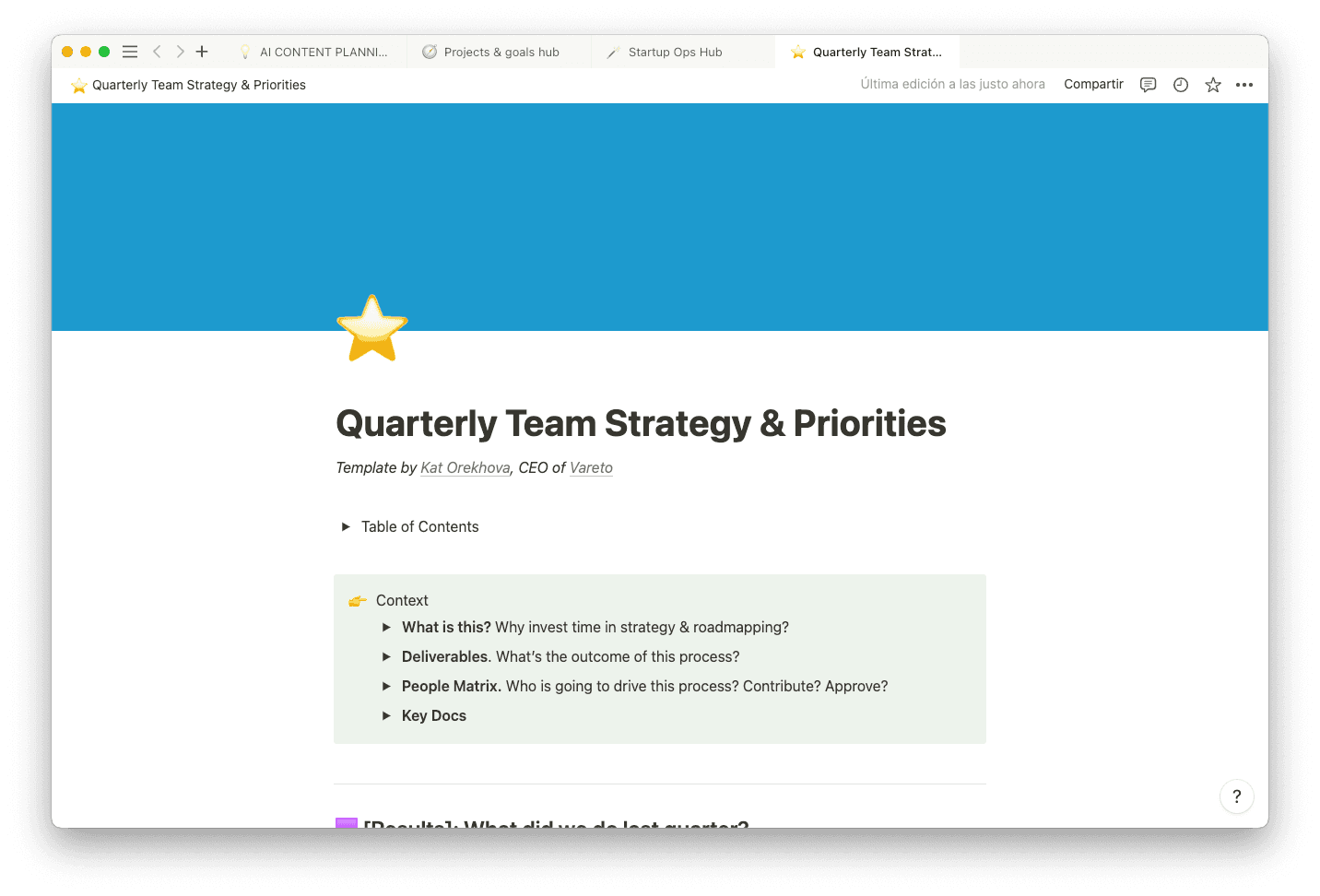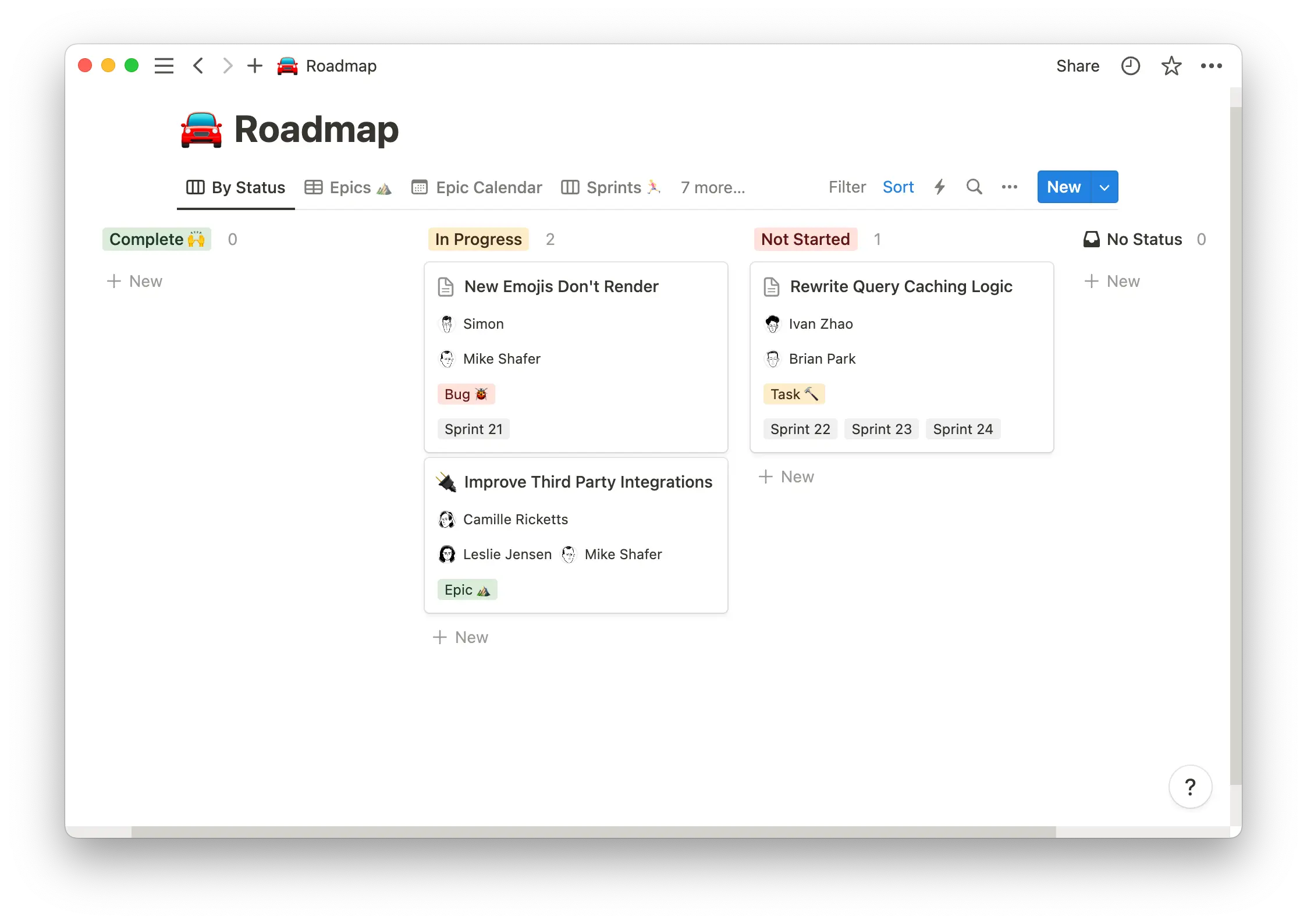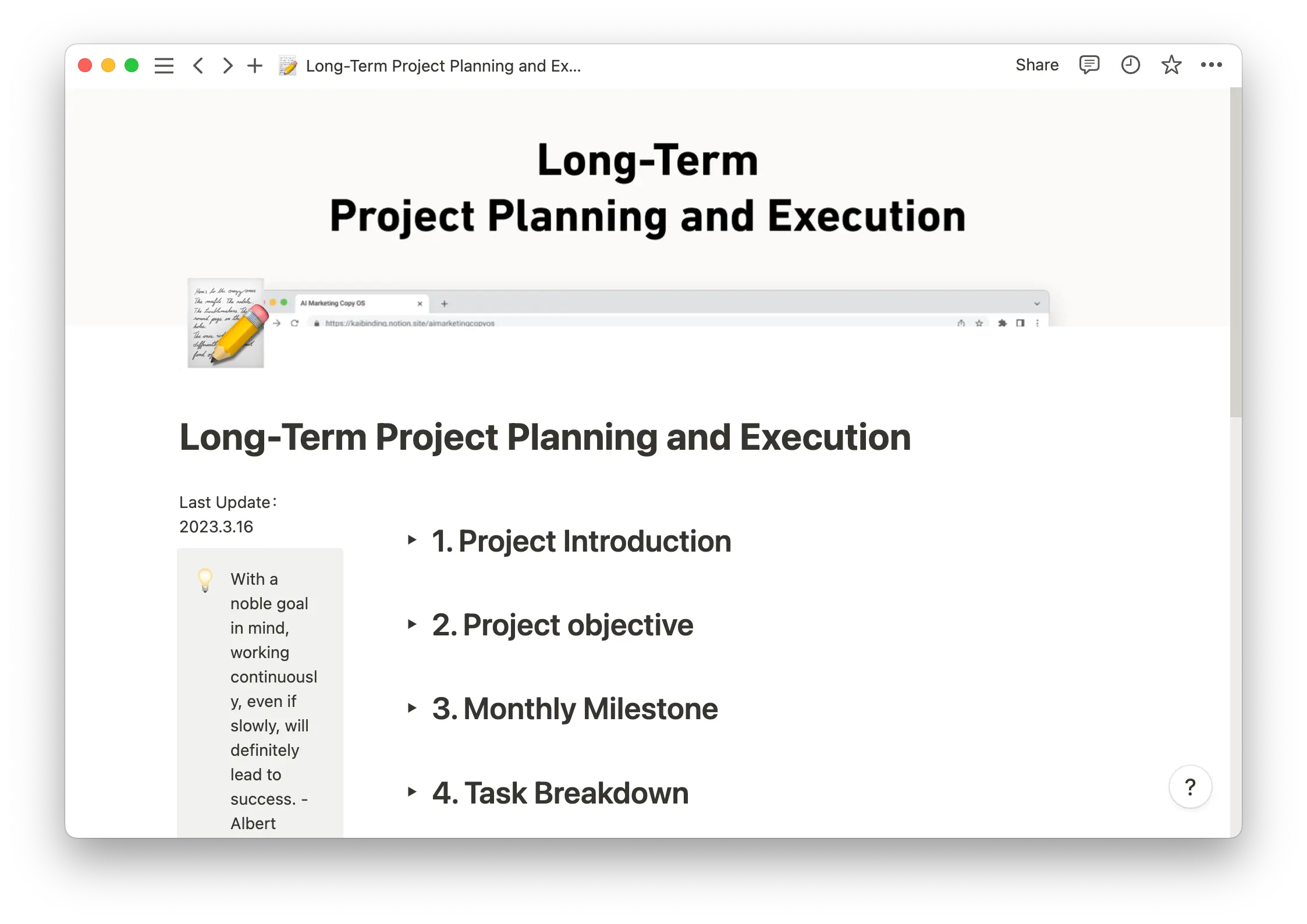Great goals effectively direct project development.
These forward-facing objectives let you envision your company’s long-term future and determine how you’ll measure daily progress.
But not every goal category shares the same timeframe and scope. Some project goals give companies an expansive, decades-long outlook, while others help teams hit their weekly targets.
Falling in the middle, strategic goals are a popular subset of objectives that provides teams with benchmarks looking a few years ahead.
Incorporating strategic goals has become a standard feature in business planning. Learn how you can use these goals to set the right expectations, manage workflows, and monitor team progress.
What’s a strategic goal?
A strategic goal is a measurable milestone company leaders choose to accomplish within 3–5 years. Team leaders and other stakeholders define strategic goals while creating a long-term strategic plan. These routine markers help guide day-to-day work procedures, ensuring shorter-term markers like objectives and key results (OKRs) and key performance indicators (KPIs) are achievable.
Although strategic goals help companies achieve long-term success, they aren’t as overarching as multi-decade objectives like vision statements or big hairy audacious goals (BHAGs). Instead, strategic goals sit in the sweet spot between short and long-term objectives. They aim for actionable results using measurable metrics to help gauge a company’s growth trajectory.
Characteristics of strategic goals
Since strategic goals sit between short and long-term objectives, they must be both expansive and precise for the best chances of success. Successful strategic goals are:
Specific and clear — there’s no room for interpretive error in a strategic goal statement. Team members and external stakeholders look to these goals to guide their daily workflows and set realistic expectations, so use precise language to avoid introducing confusion.
Easy to measure — team leaders guarantee their goals are crystal-clear by including quantifiable metrics like growth percentages, revenue expectations, and market share rates. These unambiguous data points make it simple to track progress and adjust processes if needed.
Time-bound — another quantifiable aspect of strategic goals is their expected due date. Although these goals are more future-oriented than your daily tasks, the 3–5-year timeframe creates a healthy sense of urgency.
Actionable — because managers use quantifiable research to set strategic goals, it’s more likely that they’re achievable. Use data such as current finances, competitive analysis reports, and a SWOT analysis to assess your situation and set meaningful but realistic goals.
The importance of setting strategic goals
While future-focused, strategic goals still impact your immediate work processes. Besides propelling teams toward future growth, setting clear strategic goals smoothes out other business functions, like communication, resource allocation, and workflow management.
These goals also provide:
Optimized team alignment — as centralized reference points, strategic goals unify team members with a shared vision of success. A clear understanding of a company’s overarching objectives helps teams organize daily workflows and fosters a positive sense of purpose and group synergy.
Help setting priorities — strategic goals help teams separate essential from less significant tasks. Leaders and employees can refer to them to measure their current operations and adjust priorities accordingly.
Efficient resource allocation — you need to ensure that teams have enough resources to achieve their goals without overspending. And strategic goals help clarify a project’s resource requirements so managers can make suitable investments given their budget constraints.
Clear communication with stakeholders — when you can refer to well-defined objectives, it’s easier to communicate crucial information to stakeholders. Setting strategic goals improves transparency and helps teammates and clients understand realistic expectations.
Measurable success markers — strategic goals typically involve quantifiable variables like organic online traffic, sales, and revenue to measure expected versus actual company growth. Well-backed goals serve as a framework for defining short-term measurables, such as KPIs, further contributing to efficient day-to-day operations.
Strategic goals versus strategic planning
A strategic goal dictates what you want to achieve, but it doesn’t outline how to do so. Strategic plans contain all the nitty-gritty procedural details involved in progressing from your current situation to your desired state.
Although strategic goals are part of the strategic planning process, they’re just one element in an all-encompassing protocol, which includes other features like a competitive analysis, RACI charts, and marketing campaigns. Put another way, the goal of strategic planning is to answer how you’ll make your strategic goals a reality.
4 tips for setting strategic goals
Because strategic goals are simultaneously far-reaching and measurable, finding the perfect language to define them isn’t a simple feat. You don’t want these goals to be too broad or too narrow in scope.
Here are a few techniques to help you determine where to focus your attention and craft a precise single-sentence goal.
1. Look to your vision statement for guidance
Your vision statement is the best place to start when brainstorming ideas for strategic goals. In essence, a vision statement is already the ultimate strategic goal since it encompasses the company’s highest ambitions.
While strategic goals won’t be as overarching, they should include language that echoes and supports the company’s vision, therefore aligning with big-picture objectives.
2. Perform a SWOT analysis
Examining your biggest strengths, weaknesses, opportunities, and threats is a tried-and-true method to generate ideas for strategic goals. With a SWOT analysis, you’ll pinpoint pain points and competitive advantages, which helps narrow your vision to areas where goal-setting is most advantageous. If your SWOT analysis reveals issues with online competition, for instance, you might tailor a few strategic goals to focus on increasing organic search traffic.

3. Focus on the “four perspectives”
The “four perspectives” of the Balanced Scorecard refer to four interrelated metrics that impact your company’s performance. Although there’s overlap between these perspectives, it helps to organize your goals into these categories to avoid concentrating too much attention on one business segment and neglecting growth in another:
Financial — the financial perspective refers to hard data related to the business's budgeting, income, and resource allocation. Goals like driving sales, reducing debt, and managing expenses fall into this category.
Customer satisfaction — understanding your customers’ current satisfaction levels helps you tailor strategic goals to retain your current consumer base and identify potential areas for expansion. Gather customer feedback via reports or surveys to reevaluate your target audience, brand perception, and changes in consumer trends.
Internal processes — also called “business processes,” this perspective focuses on your team’s operational efficiency and productivity rates. Look for gaps in communication pathways, organization structures, and documentation procedures, and craft strategic goals to streamline operations.
Learning and growth — this perspective focuses on your company’s knowledge base and your team’s expertise. Consider crafting strategic objectives in this category if you discover weak spots in processes like onboarding, knowledge sharing, and ease of access to resources.
4. Schedule time for strategic plan reviews
Strategic goals aren’t set in stone. When circumstances change unexpectedly, leaders must reevaluate the likelihood of hitting their targets.
As a rule of thumb, consider scheduling quarterly team strategy sessions to assess your goals with updated data. Use this opportunity to bring up new strategic goal ideas, track the progress of existing items, and consider revising the scope of your ambitions.

10 examples of strategic goals to get you started
Strategic goals are concise sentences that start with a verb, list what you want to accomplish, and note an expected timeframe. Here are 10 examples to help you get a sense of how to structure your own strategic goals:
Reduce annual customer churn to 5% in three years.
Increase market penetration in Latin America by 15% by 2026.
Surpass $12 million in total revenue within four years.
Reduce ad spending by 5% in three years.
Hit three million followers across social media accounts in three years.
Increase customer retention rate by 4% in three years.
Open 20 new brick-and-mortar locations within five years.
Grow the engineering team by 30 members within three years.
Pay down 25% of long-term debt obligations by 2026.
Increase mobile app downloads by 70% within three years.
Set your strategic objectives with Notion
Creating company goals is just the start. Once you’ve formulated your strategic objectives, you need to monitor progress, communicate with relevant parties, and streamline your strategy implementation.
Consider incorporating Notion templates into your workspace to keep your team focused on reaching your strategic goals. With long-term project planning templates, team leaders can share and monitor their goals from initiation to completion.






